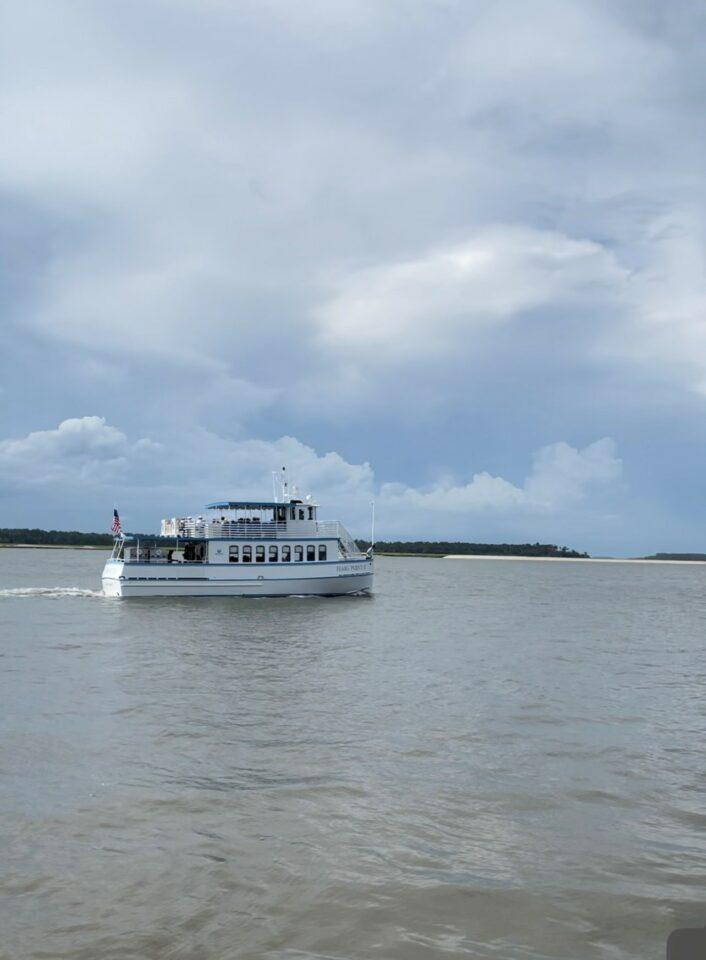
The timeline of the Haig Point II retrofit, as told by Captain Richard Inglis, Director of Transportation
The Haig Point II is a custom-built fifty-five-foot passenger vessel designed by Timothy Graul and built by Breaux Brothers Enterprises in Loreauville, Louisiana for International Paper Realty Corporation of South Carolina.
Two ferries were built as part of a comprehensive transportation system, meaning the docks, ramps, floating docks, and luggage system were designed specifically for this application.
The boat measures: Length 55′. 2″, Breadth of 17′. l”, and Depth 6′.3″. The Gross tonnage is 39 tons. The net tonnage is 31 tons and the boat’s dry weight is 30 tons.
Originally licensed to carry 100 passengers and three crew with five, four by-six luggage carts, the boat went on to serve the club from late 1987 until July 1, 2019. The boat made tens of thousands of crossings and by conservative estimate transported over 1.6 million passengers in its 32-year span.
Over the years much speculation ensued over how long a fifty-five-foot ferry could operate on partially protected waters. A wide variety of answers were gathered from the experts so the Club had to determine its own strategy. The decision was made to refit the boat to increase the service life to fifty years. With that in mind, the boat was rebuilt and is expected to remain in service until it is replaced sometime around 2037.

This strategy was developed through the work of management and the
Transportation committee and the formation of the “the ten-year plan.”
The boat was taken out of service on July 1, 2019. The boat was hauled out
of the water on September 17, 2019, at Steven’s Shipyard in Charleston,
South Carolina. The boat was relaunched on July 1, 2021, and brought back to
Hilton Head on July 31, 2021.
During that 13-month period, the boat was stripped of all machinery, wiring,
plumbing and furnishings and every aspect of the hull and superstructure
was inspected and repaired to like new condition.
Jonathan Soja with Gibbs-Cox naval architects redesigned the propulsion
and machinery plans.
Rob Zavatsky redesigned the passenger spaces. The passenger spaces
were redesigned to afford the latest in passenger comfort complete with
commuter work counters and a space for a wheelchair. The materials and
final seat plans were provided by CITI seats on the upper deck and UES
out of Everett WA, a firm that supplies commercial vessel interiors for
boats all over the world. Over 25 surface, fabric and accent pieces in the
passenger spaces yield the ultimate in modern aesthetics and passenger
comfort.
From August 1, 2021, to July 1, 2022, the interior, electronics, stability
testing and final Coast Guard inspections.



